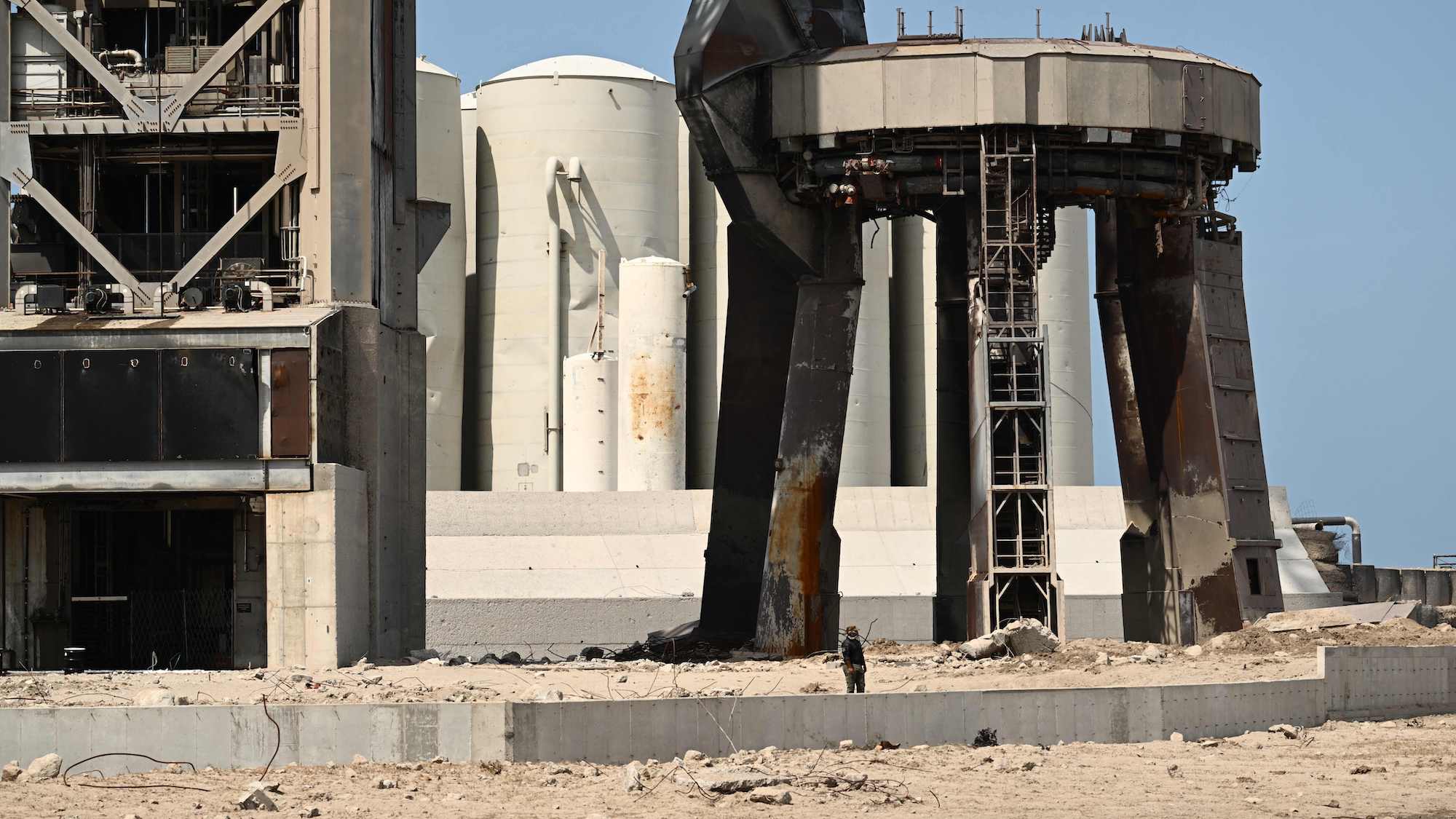

Last week’s much-hyped test flight of SpaceX’s Starship, the most powerful rocket ever constructed, ended in a fiery explosion minutes after launch, falling far short of the SpaceX team’s optimistic goal of a watery landing near Hawaii. The truncated conclusion was not entirely surprising, however—SpaceX CEO Elon Musk himself estimated a 50 percent chance of failure while speaking at a conference last month. Regardless of how one views the launch postmortem, one thing is for certain—Starship made its presence known to locals last week, and left an absolute mess in its wake.
[Related: Watch SpaceX’s giant Starship rocket explode.]
Hailed as a success by many SpaceX fans and a dud by some of its critics, Friday’s historic Starship launch was nothing if not “truly terrifying” for those living near the Boca Chica, Texas, launchsite. According to a report from The New York Times, “virtually everywhere” in the neighboring town of Port Isabel was covered in a layer of thick dust and sand grain. The force from Starship’s 33 Raptor engines also generated enough power to resemble a “mini earthquake,” residents told the The NY Times, and resulted in at least one store owner’s window shattering. Starship’s takeoff blasted a 25-feet deep crater into the launch site, sending up plumes of dust and dirt, alongside bowling ball-sized debris that smashed into at least one empty parked NASA Spaceflight van nearby. This isn’t the first instance of SpaceX-induced damage, either—in 2021, a SpaceX disintegrating Falcon 9 rocket stage’s pressure vessel landed on a Washington State farm, leaving a four-inch dent in the ground.
As Space.com explained over the weekend, locals have also voiced concerns over future Starship launches’ effects on local flora and fauna. SpaceX’s Starbase facilities are located near wildlife refuge areas—while such rocketry complexes are often built in similar remote areas, safety steps and safe-distance requirements generally minimize harm and disruption. On April 19, one day before Starship’s rescheduled launch, 27 environmental, community, and indigenous organizations signed an open letter expressing concerns over the massive rocket’s effects on both locals and the environment. This includes sacred land for local indigenous peoples.
“We, the Carrizo Comecrudo Tribe of Texas, oppose SpaceX operations destroying our sacred lands,” Tribal Chairman, Juan B. Mancias, said in the co-signed statement, adding “The Tribe was never consulted by any of these companies or electeds about rockets… who never responded to our request for a meeting.”

“SpaceX routine operations and testing are already destroying wildlife refuges and sacred lands of the Carrizo Comecrudo Tribe of Texas and are threatening Rio Grande Valley communities with explosion risks,” reads a portion of the letter. “SpaceX [cut] off access to the beach from local families, preventing the Carrizo Comecrudo Tribe from accessing sacred lands for ceremonies, destroying more than 60 acres of wildlife habitat for threatened and endangered species, and threatening public safety with rocket shrapnel blown into fishing spots and the community.”
Last June, the Federal Aviation Administration concluded SpaceX’s upcoming orbital launch plans would result in “no significant impact” to the nearby region, pending 75 action steps to mitigate environmental concerns. Musk claims his private spacefaring company will have another Starship ready to launch from the same facility in “1 to 2 months.”
Update 4/25/23: The Federal Aviation Administration (FAA) confirmed to CNBC on Monday afternoon that it has grounded the company’s Starship Super Heavy launch program pending results of the “mishap investigation” which was “triggered by debris entering adjacent properties.”

